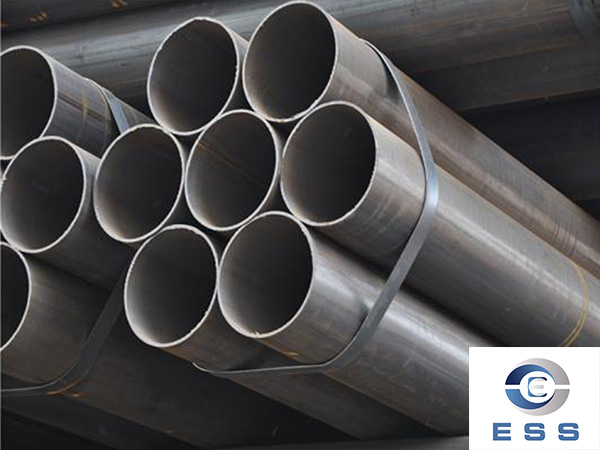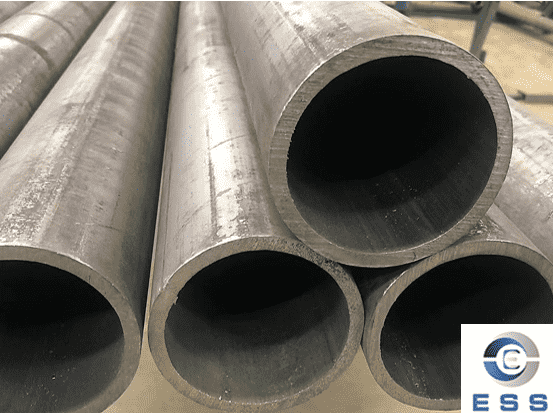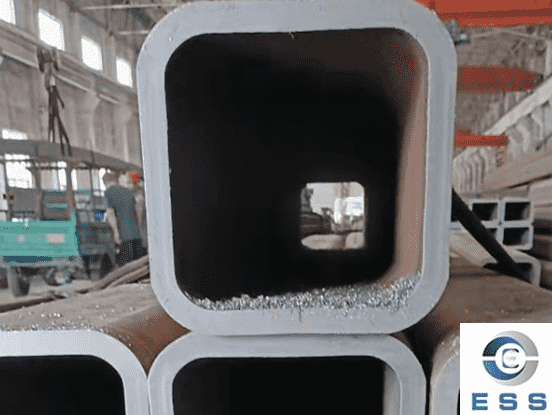Why are ERW pipes the first choice for modern architecture?
Introduction
A. Definition of ERW Pipes (Electric Resistance Welded pipes)
Electric Resistance Welded (ERW) pipes are a type of steel pipes that are formed by rolling a flat sheet of steel into a cylindrical shape and welding the edges together using electric resistance welding. This process produces a strong and seamless joint, making ERW pipes ideal for various applications in modern architecture.
B. Overview of Their Usage in Modern Architecture
ERW pipes have gained widespread popularity in modern architecture due to their exceptional strength, durability, and cost-effectiveness. Architects, engineers, and builders have increasingly turned to ERW pipes as a reliable construction material, benefiting from their diverse range of applications.
C. Importance of Choosing the Right Material for Construction
In the realm of architecture, choosing the right materials is of paramount importance to ensure the longevity and safety of buildings. ERW pipes offer several advantages that make them a compelling choice for professionals seeking reliable and efficient building components.

1.Advantages of ERW Pipes in Modern Architecture
A. Strength and Durability
Composition and Manufacturing Process
ERW pipes are typically manufactured from high-quality, low-carbon steel, which provides excellent structural integrity. The electric resistance welding process ensures a seamless joint, making the pipes resistant to cracking and leakage.
Resistance to External Forces and Environmental Factors
ERW pipes possess superior strength, enabling them to withstand heavy loads and external forces, making them suitable for constructing tall and complex structures. Additionally, they exhibit resistance to corrosion and weathering, ensuring durability even in challenging environmental conditions.
B. Cost-effectiveness
Comparative Cost Analysis with Other Materials
A comparative cost analysis reveals that ERW pipes offer significant advantages over materials like seamless pipes. The manufacturing process of ERW pipes is more efficient and economical, resulting in lower production costs.
Long-term Savings and Maintenance Benefits
The durability and low maintenance requirements of ERW pipes lead to long-term cost savings for building owners. The reduced need for repairs and replacements contributes to the economic viability of using ERW pipes in construction projects.
C. Flexibility in Design
Various Sizes and Shapes Available
ERW pipes are produced in a wide range of sizes, diameters, and thicknesses, providing architects and engineers with the flexibility to design structures of varying scales and complexities.
Seamless Integration into Different Architectural Styles
The versatility of ERW pipes allows them to seamlessly integrate into different architectural styles, offering architects the freedom to create unique and innovative designs that reflect their creative vision.
D. Sustainability and Eco-friendliness
Environmentally Friendly Characteristics of ERW Pipes
ERW pipes, made from recyclable steel, are environmentally friendly and contribute to reducing the carbon footprint in construction projects, aligning with sustainable building practices.
Contribution to Green Building Practices
By incorporating ERW pipes into green building initiatives, architects can earn credits toward sustainable certifications like LEED (Leadership in Energy and Environmental Design), reinforcing their commitment to eco-friendly construction.
2. Applications in Modern Architecture
A. Structural Support and Frameworks
Role in Constructing Sturdy Building Frames
ERW pipes play a crucial role in constructing robust building frames and structural systems that can withstand heavy loads, seismic forces, and other external pressures, ensuring the overall safety and stability of the structure.
High Load-bearing Capacity for Tall and Complex Structures
Due to their strength and load-bearing capacity, ERW pipes are commonly used in the construction of skyscrapers and other tall structures, providing the necessary support for vertical expansion.
B. Façade and Exteriors
Aesthetics and Versatility in Exterior Design
ERW pipes offer architects the ability to create visually appealing facades with distinctive patterns and textures, allowing them to achieve unique design aesthetics that leave a lasting impression.
Weather Resistance and Protection Against Corrosion
ERW pipes' resistance to weathering and corrosion ensures that the building's exterior remains intact and visually appealing over the years, reducing maintenance costs and preserving the building's architectural charm.
C. Plumbing and Water Distribution
Safe and Efficient Water Transportation
ERW pipes are widely used for plumbing systems in buildings, ensuring the safe and efficient distribution of water throughout the structure, maintaining a steady flow and minimizing the risk of leaks.
Use in Sewage and Drainage Systems
In addition to water distribution, ERW pipes are also employed in sewage and drainage systems, efficiently managing wastewater to maintain a clean and hygienic environment.
D. HVAC (Heating, Ventilation, and Air Conditioning) Systems
ERW Pipes for Ductwork and Ventilation
The smooth interiors and consistent dimensions of ERW pipes make them ideal for HVAC ductwork, ensuring efficient air circulation throughout the building, enhancing indoor air quality, and supporting the optimal functioning of ventilation systems.
Heat Transfer Efficiency and Thermal Properties
ERW pipes' thermal conductivity allows for effective heat transfer in HVAC systems, contributing to energy efficiency and promoting a comfortable indoor environment for building occupants.
3.Case Studies: Examples of ERW Pipes in Modern Architectural Projects
A. Iconic Buildings and Landmarks
Notable Buildings Showcasing ERW Pipe Usage
Several iconic buildings around the world incorporate ERW pipes in their construction, demonstrating their structural and aesthetic benefits. Prominent examples include the Burj Khalifa in Dubai and the Shard in London.
Unique Architectural Features Achieved with ERW Pipes
Architects have utilized ERW pipes creatively to achieve unique design elements, showcasing their potential in pushing architectural boundaries. The swirling lattice design of the CCTV Headquarters in Beijing is one such exceptional application.
B. Sustainable and Green Buildings
Projects Emphasizing Eco-friendly Construction
Numerous sustainable and green buildings feature ERW pipes as part of their environmentally conscious construction practices. The California Academy of Sciences in San Francisco is an example of a LEED Platinum-certified building that incorporates ERW pipes into its design.
LEED Certification and Environmental Benefits
By using ERW pipes in green building projects, architects can contribute to achieving LEED certification and promote sustainable building practices, highlighting their commitment to environmental stewardship.
4.Challenges and Limitations of ERW Pipes in Architecture
A. Weld Quality and Inspection
Importance of Ensuring Proper Welding Techniques
The quality of the weld is critical to the overall strength and integrity of ERW pipes, necessitating stringent welding standards and inspections during manufacturing and construction processes.
Quality Control Measures and Standards
To address potential welding issues, manufacturers and builders implement rigorous quality control measures and adhere to industry standards, ensuring the reliability of ERW pipes in construction projects.
B. Corrosion and Maintenance
Vulnerability to Corrosion in Specific Conditions
ERW pipes may be susceptible to corrosion in certain environments, necessitating appropriate coatings or material selection to protect against deterioration over time.
Maintenance Strategies to Prolong ERW Pipe Lifespan
Regular maintenance and preventive measures are essential to extend the lifespan of ERW pipes and ensure their continued performance and durability throughout the building's lifecycle.
5.Future Prospects and Innovations
A. Research and Technological Advancements (Continued)
Ongoing Developments to Improve ERW Pipe Properties
Researchers and manufacturers are continually exploring ways to enhance the strength, corrosion resistance, and other properties of ERW pipes, paving the way for even more reliable and sustainable construction materials. Innovations in steel alloy compositions and welding techniques are being investigated to further bolster the structural integrity and performance of ERW pipes.
Enhanced Coatings and Corrosion Resistance
To address concerns about corrosion vulnerability in specific conditions, ongoing research aims to develop advanced coatings that provide superior protection to ERW pipes. These coatings will not only extend the pipes' lifespan but also minimize maintenance efforts and expenses in the long run.
B. Integration with Smart Building Systems
ERW Pipes in the Context of Smart Architecture
The advent of smart building technologies opens up new possibilities for integrating ERW pipes into intelligent infrastructure systems. By incorporating sensors and monitoring devices within ERW pipe networks, architects can gain valuable data insights regarding water flow, HVAC performance, and structural integrity.
Connectivity and Data Utilization for Enhanced Building Performance
Smart ERW pipe systems can contribute to improved building performance by optimizing water and energy usage. Building managers can make data-driven decisions to enhance energy efficiency and manage resources more effectively, aligning with the growing demand for sustainable and energy-efficient buildings.
6. Conclusion
A. Recap of the Benefits of ERW Pipes in Modern Architecture
ERW pipes have emerged as a reliable and sustainable choice for modern architecture, offering advantages in strength, durability, cost-effectiveness, and environmental responsibility. Their versatility allows for creative design solutions, making them a valuable asset for architects and builders alike.
B. Encouragement for Continued Exploration and Adoption in Construction
The widespread adoption of ERW pipes in modern architecture is a testament to their merits. As professionals in the construction industry continue to witness the advantages offered by ERW pipes, their integration into various projects will likely expand.
C. Final Thoughts on the Future of ERW Pipes in Architectural Design
As technology and research progress, ERW pipes are poised to play an even more significant role in shaping the architecture of the future. With ongoing advancements in materials science, welding techniques, and the integration of smart technologies, ERW pipes will continue to evolve as a dependable and sustainable solution for modern construction projects.
In conclusion, the numerous advantages of ERW pipes, ranging from their strength and durability to cost-effectiveness and sustainability, make them an attractive choice for modern architecture. Their applications span structural support, plumbing, HVAC systems, exteriors, and more, showcasing their versatility. Despite challenges like weld quality and corrosion vulnerability, ongoing research and technological advancements promise to overcome these limitations. As architects and builders continue to embrace ERW pipes and integrate them into innovative design solutions, the future of architecture holds great potential for sustainable and efficient construction practices.













 Eastern Steel Manufacturing Co.,Ltd not only improve product production and sales services, but also provide additional value-added services. As long as you need, we can complete your specific needs together.
Eastern Steel Manufacturing Co.,Ltd not only improve product production and sales services, but also provide additional value-added services. As long as you need, we can complete your specific needs together.










